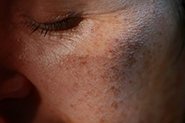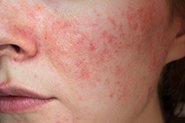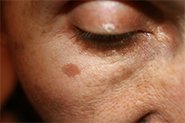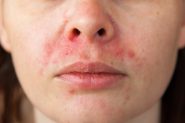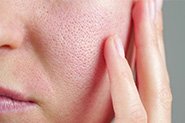
Can you use fake tan when using a prescription retinoid?
Sure, but be prepared for normal light peeling to look dramatically more intense! You will also need to be diligent about your tan re-application – any product that speeds up skin cell turnover in the epidermis (e.g. AHA, retinoids, azelaic acid), will decrease the longevity of your tan. This is because fake tan only ‘browns’ the cells of the epidermis, which are constantly being shed and regenerated with fresh new cells. If you speed up the shedding or regenerating process, you will also speed up the loss of the ‘tanned’ cells.
The easy solution is to add a few drops of liquid bronzer in your moisturiser to get you through both the tricky peeling stage, and minimise your tanning workload. A word of warning though – don’t add bronzer to your sunscreen – even a few drops will dramatically water down the SPF, reducing your sun protection.
If you are a Qr8 patient and would like personalised recommendations, or your skin is feeling a bit sensitive, just contact our text support line for advice before you tan!
Should I apply fake tan before or after my usual skincare routine?
The active ingredient in self-tanning products (dihydroxyacetone, DHA) interacts directly with the outermost cells of the epidermis to produce the browning reaction we all know and love! So it’s best to apply it directly to the skin, unless you’re using a concentrated product that is designed to be mixed into a moisturiser for application. Many self-tanning products are now formulated with other skincare ingredients, so can be used as a multipurpose product, and incorporated into your regular skincare routine.
Does fake tan impact the effectiveness of active skincare products?
Probably not directly – DHA is tricky to formulate with, and can acidify in solution over time, but this shouldn’t present problems for the consumer, if the product is stored in a cool, dark spot, and used by the expiry date/PAO date.
If you’re skipping use of actives like prescription retinoids that work best when used daily, in order to prolong your tan, you will indirectly be reducing their effectiveness, however! (the reason why we’re not fans of skin cycling!).
Can fake tan on the face cause issues/inflammation/damage etc if used with active skincare products?
Absolutely! Like every other skincare product, self-tanners don’t just contain a single ingredient. Along with the DHA, self-tanners are formulated with other ingredients like fragrance, bronzing colours, and some preservatives, like methylisothiazolinone (MI) and methylchloroisothiazolinone, that are known problem-children when it comes to contact dermatitis.
And over-use of active skincare can result in an impaired barrier, which predisposes people to contact and allergic dermatitis reactions.
So the key is to only apply self-tanning products to healthy skin, and avoid use if your skin is inflamed or damaged. If you’re a sensitive type, a patch test is ALWAYS a good idea before you slather it everywhere!
WOULD YOU LIKE TO CHAT TO ONE OF OUR FRIENDLY DOCTORS ABOUT YOUR SKIN CONDITION?
CLICK HERE TO BOOK A CONSULT WITH OUR EXPERIENCED MEDICAL TEAM.


